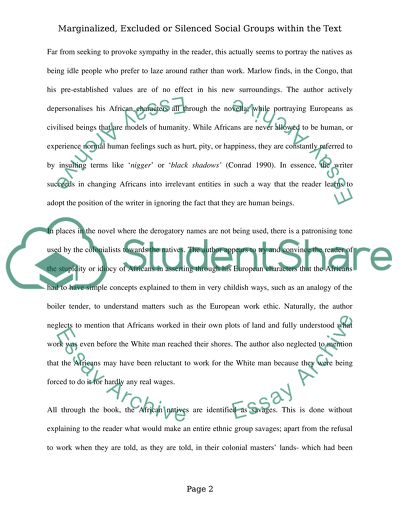Cite this document
(“Joseph Conrads Heart of Darkness Which social groups are marginalized, Essay”, n.d.)
Retrieved from https://studentshare.org/english/1484911-joseph-conrads-heart-of-darkness-which-social-groups-are-marginalized-excluded-or-silenced-within-the-text
Retrieved from https://studentshare.org/english/1484911-joseph-conrads-heart-of-darkness-which-social-groups-are-marginalized-excluded-or-silenced-within-the-text
(Joseph Conrads Heart of Darkness Which Social Groups Are Marginalized, Essay)
https://studentshare.org/english/1484911-joseph-conrads-heart-of-darkness-which-social-groups-are-marginalized-excluded-or-silenced-within-the-text.
https://studentshare.org/english/1484911-joseph-conrads-heart-of-darkness-which-social-groups-are-marginalized-excluded-or-silenced-within-the-text.
“Joseph Conrads Heart of Darkness Which Social Groups Are Marginalized, Essay”, n.d. https://studentshare.org/english/1484911-joseph-conrads-heart-of-darkness-which-social-groups-are-marginalized-excluded-or-silenced-within-the-text.


